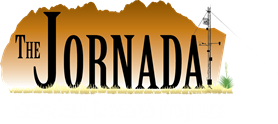| Title | Using time-series intervention analysis to model cow heart rate affected by programmed audio and environmental/physiological cues |
| Publication Type | Conference Proceedings |
| Year of Publication | 2010 |
| Authors | Anderson D.M., Remenyi N., Murray L.W |
| Conference Name | Applied Statistics In Agriculture Conference Proceedings |
| Pagination | 107-136 |
| Date Published | 2010 |
| Publisher | Kansas State University |
| Conference Location | Manhattan, Kansas |
| ARIS Log Number | 257429 |
| Keywords | audio cue, direction virtual fencing, DVM, free-ranging beef cattle, heart rate, Polar hear rate monitors, time-series analysis |
| Abstract | This research is the first attempt at using time -series analysis to describe changes in the heart rate (HR) of free-ranging cows receiving programmed audio cues from directional virtual fencing (DVF™) devices designed to control the animal's location on the landscape as well as non-programmed environmental/physiological cues. Polar Accurex® devices were used to capture HR every minute between March 19-24, 2003 when three mature free-ranging beef cows previously habituated to DVF™ control were confined to a brush-infested area of an arid rangeland paddock. Global positioning system (GPS)electronics were used to locate each cow's location approximately every minute while it was in a 58 ha virtual paddock (VP™) and every second when it penetrated a virtual boundary (VB™). The cows never escaped through the VB™ though they penetrated it a total of 26 times in 11 different events at which time they received programmed audio cues lasting from 1 to 56 s. These data reveal that HR spikes from programmed audio cues all fell within the textbook range for cow HR (40-186 beats per minute, bpm). For both audio and selected evironmental /physiological events, HR spikes returned to pre-cuing "baseline" values in about one minute. However, the longest return time to baseline lasted (about 4 minutes) and this was for an environmental/physiological event. HR, animal location, weather and other electronic data should be measured at equally-spaced time intervals using a single time stamp so as to accurately associate HR changes with possible causes. |
| URL | /files/bibliography/10-045.pdf |


